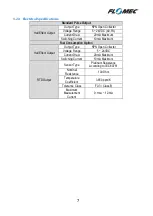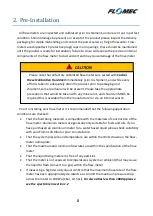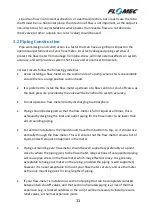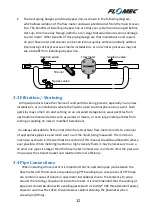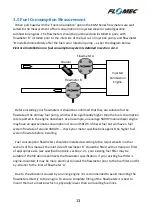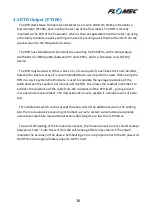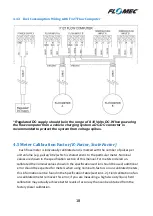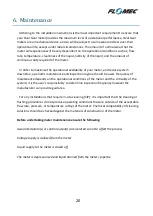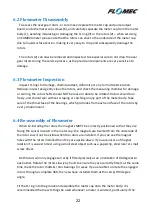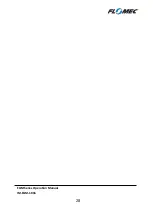
19
5.
Commissioning
The most common cause of damage to Oval Gear meters is improper start-up procedure
after an installation or piping modification. New or modified piping is generally full of large
volumes of air, and possibility contains foreign matter. If your piping has been designed
carefully as outlined in this manual, it will be an easy task to prepare your system for safe
commissioning of your flow-meter.
The newly installed meter must NOT be run until the piping is completely flushed of
foreign materials. The most common foreign matter that is present in new or modified
piping is; welding slag, grinding dust, sealing tape/compound, and surface rust. If your
piping has been designed with a bypass line it will be easy to isolate your meter from the
remainder of the system in order to flush out the majority of the piping. If you have not
installed a bypass line around the meter, the best solution is to replace the meter with a
spool-piece for the duration of the flushing procedure; if this is not practical then the rotors
must be removed from the meter prior to flushing.
The other critical concern when commissioning a meter is the presence of air slugs; this is
also a concern for any systems that have been shut down for long periods of time. Do not
start up your system for the first time by opening all valves and turning on the pump, or
by quickly opening up the supply valve from a gravity feed tank; it is essential that the
system is first purged of air. Large volumes of air contained in the piping will be
compressed very quickly between the oncoming liquid and the stationary flow-meter rotors
and will spin the rotors at speeds many times that of their maximum rating which can very
often completely destroy the meter.
To safely start a meter for the first time, and avoid any failure from air slugs, the best
procedure is to eliminate the majority of the air volume in your piping system using the
bypass line described earlier. After bleeding the majority of the air through the bypass line,
the remainder of the air can be slowly passed through the meter by gently opening the flow
control valve downstream of the meter. If a bypass line has not been incorporated into your
system, and no alternative exists for bleeding air upstream of the meter, then the entire air
volume of your piping will need to be bled very slowly through the downstream valve.
Following the start-up procedure, and during the period of initial operation, it is
recommended that the inlet strainer on your meter be inspected regularly, and cleaned if
necessary, as it is possible that not all foreign material will be completely removed from
your system during the initial flushing.



